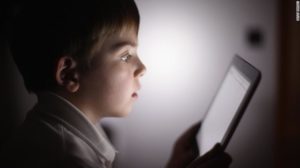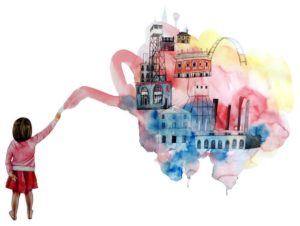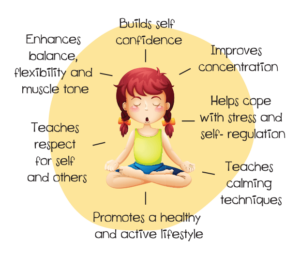Topic Exploration (Ask)
*Conversational French course outside school
*Mindfulness practice
I have created this French class for children of new immigrants (Grade1-3) at Riverside Park in Kamloops because French is the second-most commonly spoken language in Canada. Aside from Québec, there are many communities with large French-speaking populations. However French-learning environments in Kamloops have been insufficient. For example, as far as I know there are only two public French immersion schools including Lloyd George elementary school and South Sahali elementary school. The second reason why we have chosen this project was that I hope children could build a connection with the nature and their bodies & mind.
Initial Questions:
*What are the main differences of expression when saying hello and good-bye in French and in English?
*What kinds of animals that might live in Riverside Park?
*How should they are kind to others and to the environment?
*How to learn French vocabularies from yoga poses for kids and improve their emotion regulation?
According to Judson (2020), he described the walking course which is a teaching method to relieve students’ curiosity and develop students’ perception. Walking can make students move, ensure their health and happiness and even stimulate their emotion and imagination by changing the learning situation. More broadly, walk-based practical courses can cultivate students’ emotional connections to the world around them, reshaped their worldview. Walking courses take a variety of forms, such as “outdoor learning”, its curriculum and activities is mostly driven by the interest of the kids.
This article inspires me a lot, as students can do outdoor activities and build their relationship with cultural communities they live in. In my opinion, outdoor education can help students move forward into unknown world, into wonderful surprises, into the magic that can happen in every moment. We cannot be truly curious or imaginative if we know what the outcomes will be. Students may feel less anxious or worried about their academic performance outside of school, they are comfortable with their peers and teachers and this is a good opportunity to focus on their physical and mental health.
Jenny Merrill in the Golden Jubilee edition of The Paradise of Childhood (1916) describes what exemplary curriculums were like in early 20th-century kindergartens including “observation of the sun, the moon, the stars, the sky, the clouds, rain and snow … shadows indoors and out-of-doors … care of living animals, learning names of natural objects.” I hope children can do this kind of learning as aboriginal pedagogy including observation of nature, learning about plants, animals and communities. One of my purposes of French class is that children will spend a half day in a park to observe, practice and learn from the nature and get away from the electronic devises. I think children should be given time to do outdoor education rather than distracted with tablets or smartphones which may harm their developments. Kutscher and Rosin (2016) found that when the kids spent more time in front of iPads, computers, TVs and mobile phones, they experienced increasing levels of “clinically significant inattention problems” as well as other ADHD-type behavior issues.

In my design of the project, I will encourage students to draw a tree and the environment. Kids will be asked to add animals that might live in trees. As Vygosky’s basic proposition revealed how children could use imagination to make sense of the world. Imagination education can make students’ learning more efficient, interesting and engaging (Egan & Judson, 2015). Many teachers believed that imagination education is not a typical topic; it is too vague for students. In order to remedy this problem and explore imagination, teachers can ask children to do many graphic or drawing activities which have probably more expected results.

https://medium.com/@krisnamughni24/imagination-education-fcc3b314960)
Maori Teaching Method:
According to Black (2014), she mentioned Maori teaching method. Maori parent knows that you have to watch a child patiently, quietly, without interference, to learn whether he has the nature of the warrior or the priest. Our children come to us as seeking beings, Maori teachers tell us, with two rivers running through them — the celestial and the physical, the knowing and the not-yet-knowing. Their struggle is to integrate the two. Our role as adults is to support this process, not to shape it. It is not ours to control.
Mindfulness Practice
As children progress, emotions continue to play an important role in learning in elementary school. According to Blair (2002), preschool-age children’s emotionality and their ability to regulate emotions and behaviors is a vital maker of school readiness. Specifically, the manner in which children express and regulate their emotions can facilitate or obstruct classroom experiences with teacher and peers. In order to solve children’s emotional issues, school should pay attention to children’s negative thinking that happen before or after strong emotions; encourage them to talk with peers or their parents; provide some meditation exercises at school like yoga class or playing games during a break. In my schedule of class, I would like to organize yoga animal poses for kids in order to educate them how to take care of their physical and mental health at the same time, they can learn basic French vocabularies about animals.

Other Key Questions:
*Which parts are you interested in French learning? Why?
*How do you share your happiness in French learning to friends or parents?
*Could you please tell me more about your emotional behaviors in schools or at home?
Thank you for reading!